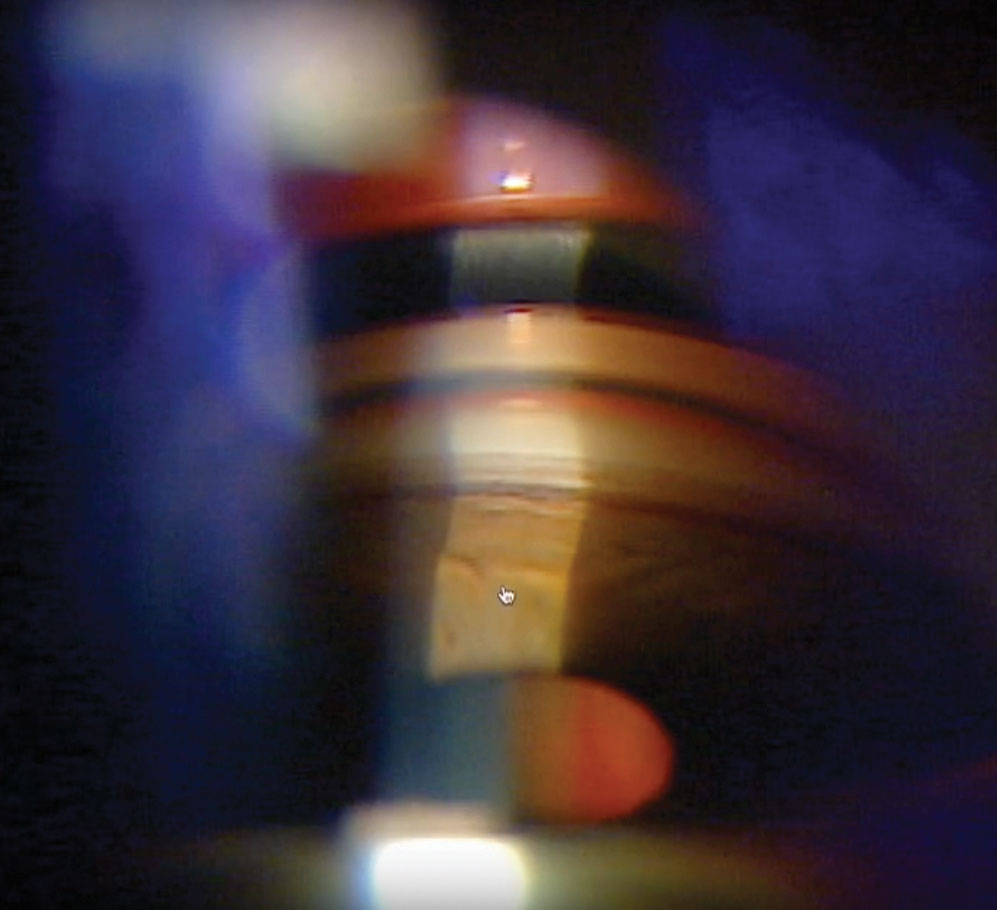 |
|
Eyecare providers need to be more diligent about performing gonioscopy in at-risk patients, researchers urge. Photo: Emily Bruce, OD. Click image to enlarge. |
New research found that more than 70% of patients receiving an initial glaucoma evaluation in the United States do not have record of gonioscopy. Groups with the lowest averages included those who are elderly, Caucasian, pseudophakic and living outside the Northeast region of the country.
In this retrospective, case-control study, researchers assessed patterns in gonioscopy during initial glaucoma evaluations in the United States. Subjects with a diagnosis of glaucoma suspect, anatomical narrow angle (ANA) or primary/secondary glaucoma were included. Among the 198,995 patients (56% female, 44% male) in this analysis, 20.4% had a recorded gonioscopy on the day of diagnosis and 29.5% within six months. There was no gender difference noted in gonioscopy rates but several racial distinctions were found. Multivariate analysis revealed that the odds of recorded gonioscopy within six months of initial evaluation was lower among non-Hispanic white patients; however, it was similar for Black and Hispanic patients when compared to their Asian counterparts. Among patients with primary angle closure glaucoma, only 56.6% of Asian subjects had a record of gonioscopy, whereas the other racial cohorts all had rates of at least 70% or more.
|
For a refresher on gonioscopy technique, see this feature. |
“Primary factors that influence a provider’s decision to perform gonioscopy during glaucoma evaluation include perceived risk of angle closure based on patient demographics (e.g., Asian race or older age) or clinical findings associated with angle closure (e.g., shallow anterior chamber depth or hyperopic refractive error),” the researchers wrote in their recent American Journal of Ophthalmology paper on the work. “If the former was predominant, we should have observed significantly higher rates of recorded gonioscopy among Asians, which we did not.”
Additionally, the study authors reported that the odds of recorded gonioscopy was also lower among patients over the age of 60 years as well as those who lived outside of the Northeast region. “While it remains unclear whether this difference is related to practice or billing patterns, our results are consistent with prior studies that reported insured patients in the Northeast region are more likely to be detected with ANA prior to developing PACG.”
When compared to patients with anatomical narrow angle glaucoma, data showed that angle closure glaucoma, secondary glaucoma or open angle glaucoma/suspect patients were less likely to have recorded gonioscopy.
“The overall low rate of gonioscopy is striking,” the researchers wrote in their paper, and at odds with recommendations from the American Academy of Ophthalmology and World Glaucoma Association. “Gonioscopy represents a crucial junction in the glaucoma management algorithm where appropriate therapy could be prescribed to prevent permanent morbidity.” They acknowledge, however, that there may have been an element of undercoding in their data that suppressed the numbers; other studies with different databases have reported gonio rates of 46% and 51%, which are also too low.
“In conclusion, gonioscopy appears to be underperformed at initial glaucoma evaluation. Current practice patterns may contribute to racial disparities in angle closure outcomes, especially among racial groups in whom the burden of PACG is less studied,” such as Black and Hispanic individuals, the study authors wrote.
“While gonioscopy remains the clinical standard that should be performed in all glaucoma evaluations, our study supports the need for more convenient clinical methods to evaluate the angle,” they noted, emphasizing that “emerging tools and methods could help improve provider adherence to standards of care and aid in earlier and more accurate disease detection and treatment.”
Hui LJ, Kristy Y, Khristin I, et al. Patterns and Disparities in Recorded Gonioscopy During Initial Glaucoma Evaluations in the United States. American Journal of Ophthalmology. February 26, 2024 [Epub ahead of print]. |

